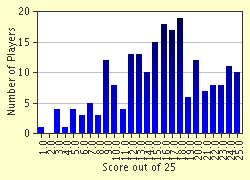Quiz Answer Key and Fun Facts
1. Canada's first Prime Minister was, of course, Sir John A Macdonald, but what party did he lead?
2. At the time of Confederation, no residence was provided for Canada's Prime Ministers. What was the name of Macdonald's home?
3. Until 1891 Canada's Prime Ministers were born outside of Canada. They were born in the same country. What country was that?
4. The second Prime Minister of Canada was the first Liberal Prime Minister. While in opposition in 1871-1872, he served both as the federal member for Lambton Ontario and provincially as member for Middlesex West. Who was he?
5. Macdonald fought his last election campaign in 1891 but suffered a stroke shortly after the new parliament convened. The man chosen by the party as his successor was a senator who believed that he was chosen as leader because he thought that he "was not particularly obnoxious to anyone". Who was he?
6. This Prime Minister led the government in the House during his predecessor's time as Prime Minister. Young, able and energetic, he was the hope of his party that had lost two leaders in less than two years. It was not to be, however, since, while in London being knighted, he suffered a fatal heart attack and died at age 50. Who was this Prime Minister?
7. Having lost three leaders in four years, the party turned again to the Senate for its next leader. This man, a past Grand Master of the Orange Lodge, faced problems in his administration due to the thorny Manitoba Schools question, a problem he was unable to solve. Internal government differences over the Schools question combined with the difficulties of attempting to lead a government from the Senate resulted in this man's resignation after only 16 months as Prime Minister. Who was this man?
8. With another leader gone, the party turned to a Father of Confederation for its next Prime Minister. This man, from Nova Scotia, was responsible for ensuring that his province entered Confederation in 1867. Who was he?
9. Sir Wilfrid Laurier won the election for the Liberals in 1896. What was he noted for?
10. Laurier' wife Zoe's will stated that Laurier House was to be inherited by William Lyon Mackenzie King.
11. Which Canadian Prime Minister graces the $100 bill?
12. This Prime Minister was the last to be knighted while in office.
13. Borden was a member of the Imperial War Cabinet and responsible for ensuring that the Canadian troops remained as a distinct entity rather than being absorbed into British units.
14. The government, under Borden, was Conservative from 1911 until his retirement in 1920.
15. Forced to retire in 1920 due to ill health, Borden was succeeded by whom?
16. This Prime Minister was the longest serving Prime Minister in the Commonwealth. His term, however, was interrupted. He hosted King George VI and Queen Elizabeth on their triumphant royal tour of 1939 - the first time a reigning monarch had visited Canada. Who was he?
17. This Liberal succeeded as Prime Minister when Mackenzie King retired. During his time as Prime Minister, Newfoundland became the 10th province of Canada.
18. Who defeated Mackenzie King in the 1930 election?
19. One of the outstanding pieces of legislation introduced by this prairie lawyer from Saskatchewan was the Canadian Bill of Rights. As leader of the Conservatives, he led minority governments in 1957 and 1962 and a huge majority in 1958. Who was he?
20. This Prime Minister won the Nobel Peace Prize for proposing the solution to the Suez Crisis of 1956. Prior to entering politics, he was in the Department of External Affairs and in the office of the High Commissioner to London. During World War I he served in the Royal Flying Corps. He was Canadian Ambassador to the United States in 1946 left to enter the political area becoming Minister of External Affairs in 1948 a position he held until becoming Liberal Leader in 1958.
21. Brought into government by Pearson, this man was Prime Minister from 1968 until 1984 with one brief interruption. One of the significant events of his tenure was the proclamation of the War Measures Act which suspended civil rights throughout Canada in response to a perceived separatist threat in Quebec.
22. This Prime Minister was in office for slightly less than nine months. He later left the leadership of the Conservative Party but continued to sit as a member. When the Conservative party was returned to power, he became Minister of External Affairs for 7 years and the Minister for Constitutional Affairs. Upon the resignation of Jean Charest, he again led the Conservatives. Who was he?
23. Brian Mulroney, Prime Minister from 1984 to 1993 attempted to reach an accommodation between Quebec and the rest of Canada with the Meech Lake Accord.
24. When Brian Mulroney retired from office, he was succeeded as leader and Prime Minister by a woman, Canada's only female Prime Minister. Who was she?
25. For the first time, this Prime Minister faced, as Her Majesty's Loyal Oppositon, a party whose aim was to remove the Province of Quebec from Confederation. Who was he?
Source: Author
tripeuro
This quiz was reviewed by FunTrivia editor
thejazzkickazz before going online.
Any errors found in FunTrivia content are routinely corrected through our feedback system.


